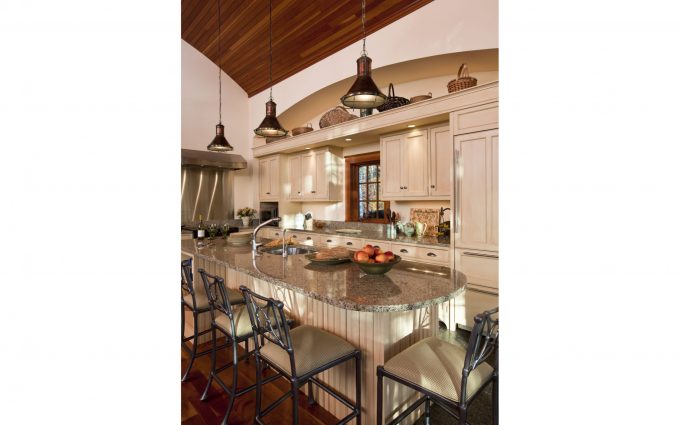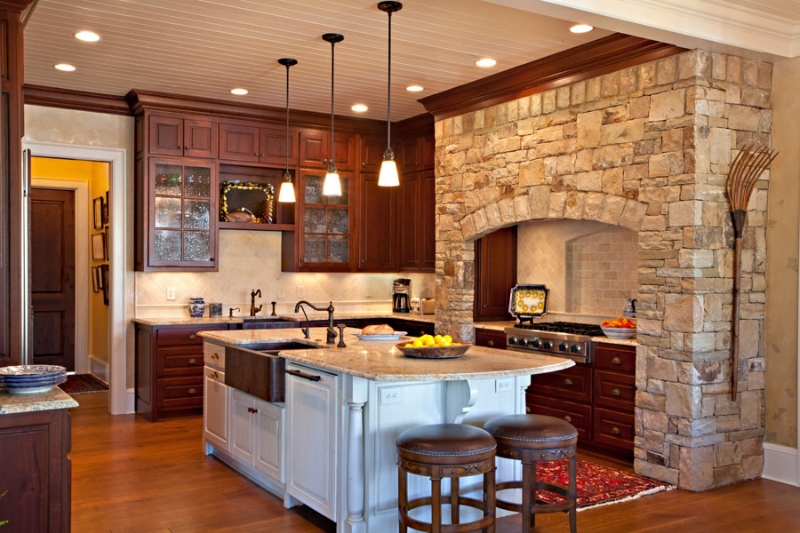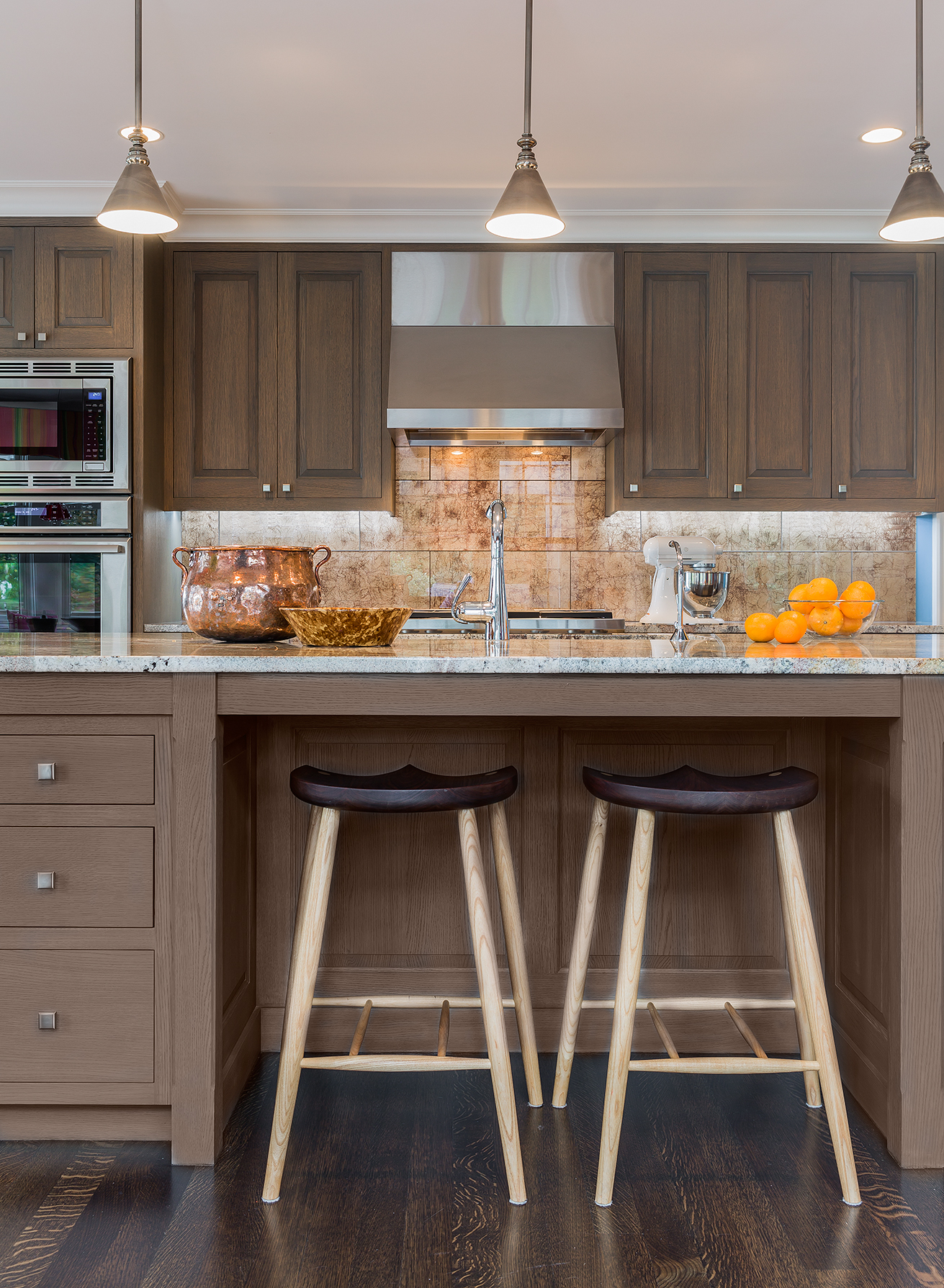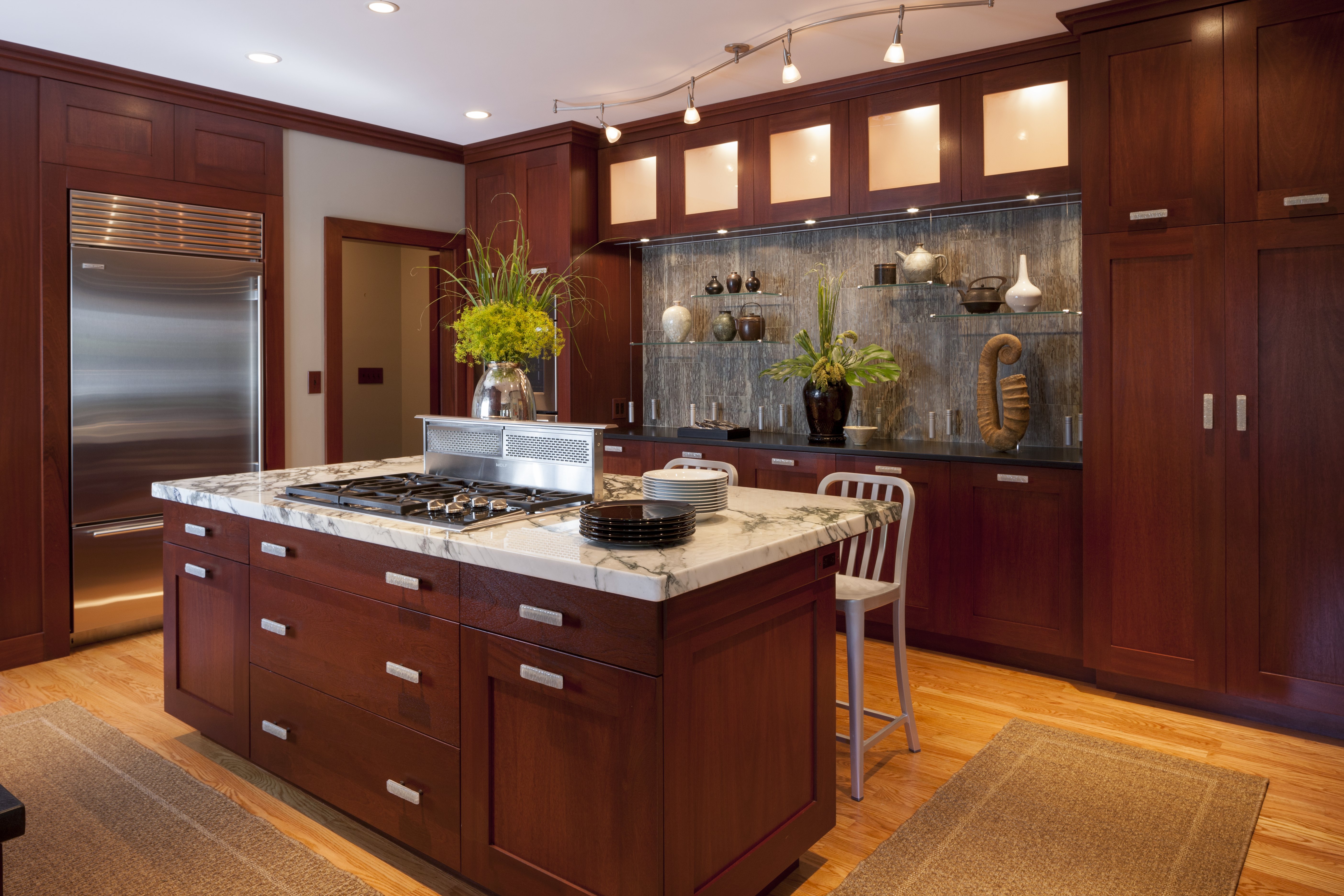
Create a functional and comfortable kitchen with just the right lighting
Kitchen lighting is an important feature of the overall interior design. Lighting can have a dramatic effect on how a kitchen looks, works and feels. Expertly designed kitchens pay careful attention to lighting and use a layered lighting approach for the plan. Having a variety of lighting options allows for flexibility to instantly convert your kitchen from a functional work space to an intimate dining or entertaining space. There are multiple types of lighting fixtures, as well as designs, to achieve this desired effect. They all include these three main types of lighting:
Ambient Light
To provide ambient or overall lighting, utilize a series of evenly spaced recessed fixtures in the ceiling to provide general illumination for your kitchen. This is the light that will soften the lines and shadows and create a warm inviting glow in the room.
Task Lighting
To provide task lighting – illumination for a given function, there are many types of lights available. Chandeliers aren’t just for dining rooms any more. Chandeliers and pendants are now popular products for task lighting over an island or seating area. Incorporate task lighting for any and all areas where you will do close-up work. Another consideration when creating your task lighting plan be sure to locate the lighting properly so as not to cast a shadow on the working area. When using chandeliers and pendants, make sure the size and scale of the lighting, as well as the style, matches that of the room.
Accent Lighting
Accent lighting can be used to highlight objects and create a mood. Place it above or below upper cabinets, inside a glass-fronted cabinet, to accent art or architectural details, or to highlight special areas or objects. Light-emitting diode (LED) lighting is popular and practical for use as accent lighting. These small, low-voltage lamps consume less than half as much electricity as fluorescents, and can last 10 times as long. Accent lighting used under cabinets can both supplement general lighting and also ensure good visibility for food preparation.
The darker the colors in your kitchen, the more lighting sources required to provide enough illumination. A well-designed lighting plan will ensure adequate light for each work area as well as the flexibility for the various overall lighting options. The combined effect of appropriately layered kitchen lighting will be glowing, not harsh and glaring. Do you need help creating a kitchen lighting plan?



Leave a Reply